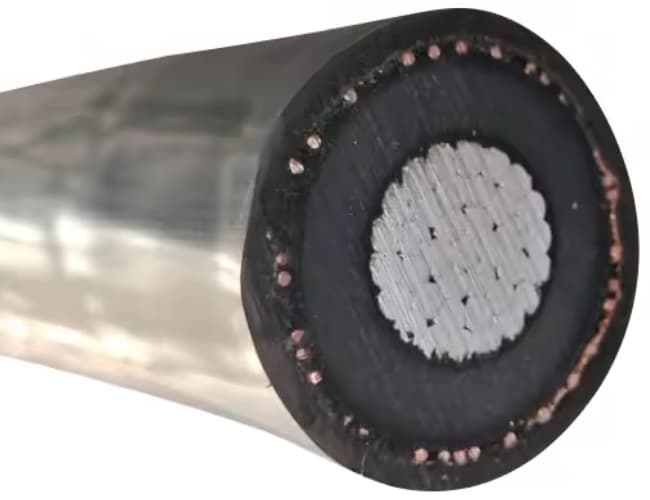
Introduction
11kV cables are crucial components in modern power distribution systems, designed to transmit medium voltage electricity. These cables are widely used in public services, industrial facilities and commercial infrastructure, where reliability and efficiency are paramount. As demand grows for high-quality, durable power transmission solutions, the cables of 11 kV, particularly those that comply with BS6622 standards, have become essential to meet these needs.
This article explores the different aspects of power cables. 11 kV, including its features, types, prices, important applications and specifications. We will cover several subtopics to give you a comprehensive understanding of power cables. 11 kV, including XLPE cables, cables HT, AB cables and more.
What is a 11kV cable?
A cable 11 kV is a medium voltage power cable designed to carry electricity at a nominal voltage of 11 000 volts. These cables are normally used to connect electrical substations, power generation plants and distribution systems. They are also widely used in industries requiring reliable power distribution., like mining, renewable energy and large-scale commercial operations.
11kV cable types
There are several types of 11kV cables, each suitable for specific applications. Let's explore the most common types:
1.Cable BS6622 de 11 kV
BS6622 cable 11 kV is manufactured to meet British Standard specifications. It is a shielded cable typically used for underground and outdoor applications where protection against mechanical damage is essential.. These cables are XLPE insulated (cross-linked polyethylene), which improves its durability and performance.
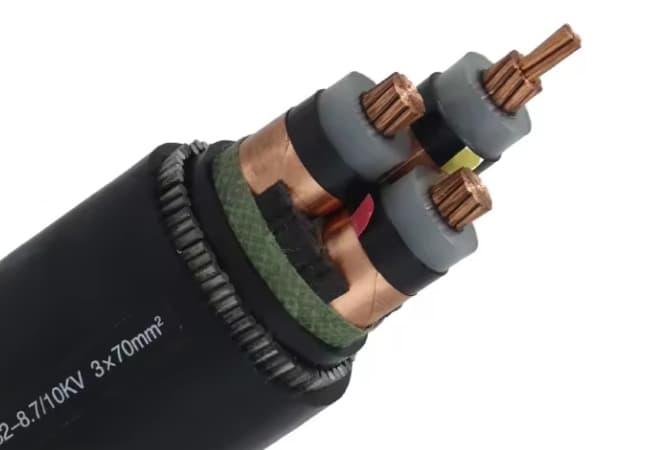
2.XLPE cable 3 cores of 11 kV
This type of cable has three conductors, each insulated with XLPE, which makes it suitable for transporting three-phase electrical energy. XLPE cable 3 cores of 11 kV is usually preferred for industrial environments where a balanced power supply is necessary.
XLPE cable 3 cores of 11 kV Price: XLPE cable prices 3 cores of 11 kV vary depending on factors such as conductor material (copper or aluminum), insulation thickness and overall construction. These cables are typically more expensive than single core cables due to the complexity of their design..
3.AB cable 11 kV (bundled overhead cable)
The AB wire 11 kV is mainly used for overhead power transmission in urban or rural areas. Its ganged construction minimizes the risk of short circuits and reduces power outages. This makes it a safer and more reliable option for overhead installations..
AB cable price 11 kV: The cost of AB cables is generally lower than that of underground cables due to simpler installation procedures and fewer materials required for protective layers..
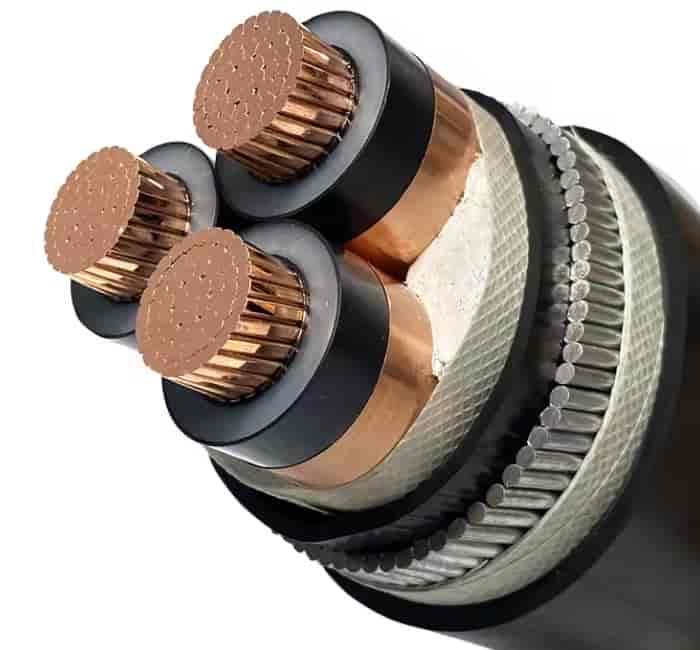
4. HT cable 11 kV
High voltage cables (HT) They are designed to withstand higher voltage levels and are used in applications requiring high voltage but minimal power loss. HT cables 11 kV are a common choice in industrial environments where robust power transmission is critical.
Megger value for high tension cables 11 kV: The Megger test is used to verify the insulation integrity of high voltage cables. A high tension cable 11 kV normally shows a high Megger value, indicating good insulation and minimal current leakage.
5.underground cable 11 kV
The underground cables 11 kV are designed for installation underground, which provides protection against environmental factors such as weather, mechanical stress and handling. These cables are usually shielded for greater durability.
Price of underground cables 11 kV: The price of underground cables is usually higher than that of overhead cables due to the additional insulation and shielding layers required for underground installations..
6. XLPE cable 11 kV
The cables of 11 kV with XLPE insulation are some of the most used cables in the industry. Cross-linked polyethylene insulation provides excellent thermal stability, chemical resistance and electrical performance.
XLPE cables price 11 kV: prices depend on the type of driver (copper or aluminum), insulation and shielding thickness. XLPE insulated cables generally offer a good balance between cost and performance.
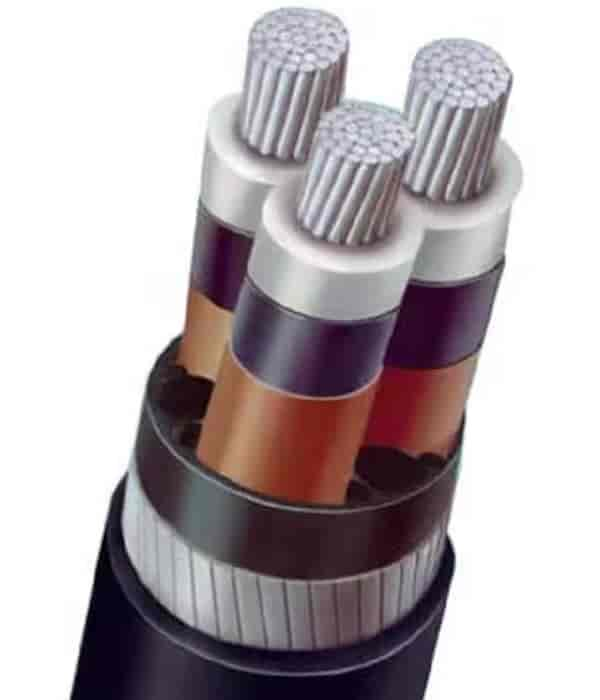
7.shielded cable 11 kV
Shielded cables 11 kV are designed to withstand mechanical damage, making them ideal for use in harsh environments. These cables are protected by layers of steel wire shielding, providing extra strength and ensuring long-lasting performance.
8.aluminum cable 11 kV
Aluminum conductors are a cost-effective alternative to copper, offering similar conductivity at a lower price. Aluminum cables 11 kV are commonly used in large scale projects where cost effectiveness is a priority.
Key specifications of 11kV cables
When selecting a cable 11 kV, It is essential to understand the critical specifications. Next, Some important factors to consider are shown:
Driver material: Copper and aluminum are the most common conductors used in power cables. 11 kV. Copper offers greater conductivity, but it has a higher cost, while aluminum is more affordable, but slightly cheaper.
Insulation material: XLPE insulation is the most common material used for power cables. 11 kV due to its excellent thermal and electrical properties.
Armor: Shielded cables are essential for applications requiring mechanical protection, especially for extreme environmental or underground conditions.
Wire size: 240 mm, 185 mm y 6,35 mm are common cable sizes used for cables of 11 kV. Size affects the current carrying capacity of the cable and overall cost.
Cable gland: cable glands 11 kV are essential to secure cable ends and provide strain relief. The correct size and type of cable glands ensure proper installation and protection.
Megger Value: refers to the insulation resistance of the cable, where higher values indicate better insulation integrity.
Taping and insulation: HT insulation tape 11 kV is used to provide additional protection and sealing for cable joints and terminations.
Voltage rating: These cables are rated for 11 000 volts, ensuring they can safely transmit medium voltage power.
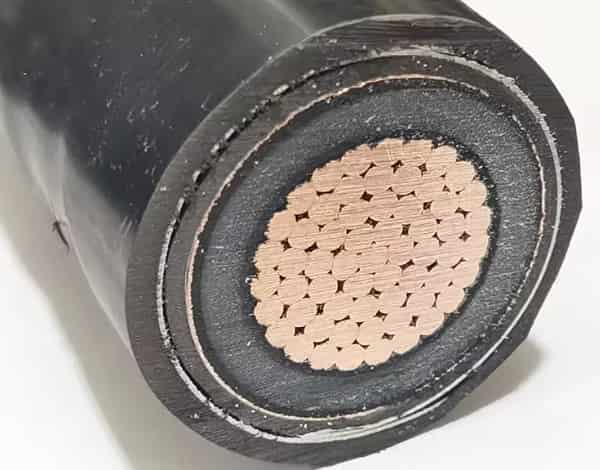
Applications of 11kV cables
The cables of 11 kV are versatile and are used in a wide range of applications, which include:
Power distribution networks: They are used to connect substations to industrial and commercial buildings, providing medium voltage electricity.
Underground facilities: They are suitable for use in cities where overhead cables are impractical due to space limitations or aesthetic issues..
Overhead power lines: the AB cables of 11 kV are often used for overhead installations in rural and urban areas.
Industrial plants: Manufacturing facilities and industrial plants often rely on power cables. 11 kV to power heavy machinery and equipment.
Renewable energy projects: the cables of 11 kV are commonly used in wind farms and solar power plants to transmit the generated electricity to the grid.
Price factors of 11kV cables
The cost of cables 11 kV varies depending on several factors:
Driver material: copper cables are more expensive than aluminum cables.
Cable type: shielded and underground cables cost more due to additional protective layers.
Insulation type: XLPE insulation increases cost due to superior performance.
Installation costs: Overhead cables are generally cheaper to install than underground cables.
For example, the price of XLPE cables 3 cores of 11 kV and aluminum cables 11 kV will vary depending on these factors. The price of cable 11 ikB 185 mm2 is also determined with the same criteria, and larger cables have higher costs.
11kV Cable Conclusion
The cables of 11 kV are vital components in the power distribution network, since they guarantee reliable transmission of electricity at medium voltage levels. Whether for industrial plants, commercial facilities or underground electrical networks, the cables of 11 kV provide a robust and efficient solution. When choosing the cable 11 suitable kV, It is important to consider key factors such as insulation material, driver type and application requirements. By understanding the different options available, you can select the most suitable cable for your project and ensure long-term performance.
